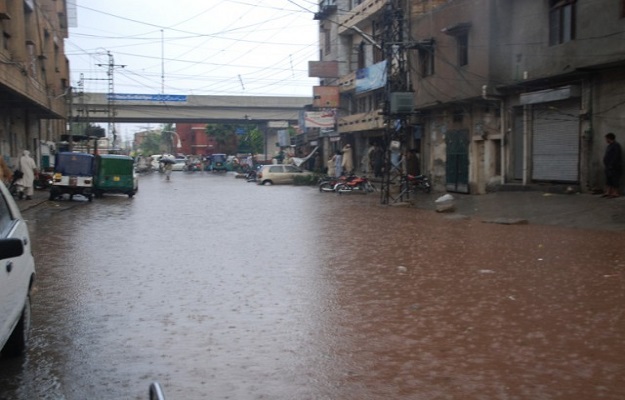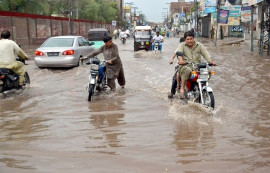
PESHAWAR: The health department has prepared a contingency plan, detailing resources required to respond to a flood emergency during this year’s monsoons.
The purpose of the plan, a copy of which is available with The Express Tribune, is to make the health department capable of providing timely support and assistance to all 25 districts. It will also be helped by other government relief organisations and the plan itself analyses the gaps and the needs of the province in such a situation.
High-risk
On June 10, the Provincial Disaster Management Authority (PDMA) shared nine out of 25 districts, including Charsadda, DI Khan, Chitral, Kohistan, Nowshera, Peshawar, Shangla, Swat and Tank were at high risk.
Upper and Lower Dir, Haripur, Karak, Kohat, Lakki Marwat and Malakand were declared moderately vulnerable districts. In addition, Abbottabad, Bannu, Buner, Battagram, Hangu, Mansehra, Mardan, Swabi and Torghar were put in Category-III or least vulnerable districts.
The health department has already identified the focal persons and their contact numbers for all 25 districts. The plan stated the Provincial Health Emergency Preparedness and Response Cell (PHEPR), and Provincial Field Epidemiology Testing Program (FELTP) offices were established at the public health section of the Directorate General of Health Services.
It also read that technical support from the World Health Organization (WHO) was available along with plenty of medicines. Health cluster partners would provide their assistance in selected high-risk districts with potentially complex emergencies.
Equipping districts
In addition, 25 emergency-kits (medicines for around 1,000 people) and a trauma kit have been provided by the WHO. The latter can be dispatched to a district at a 24-hour notice.
The kits were sent to high-risk districts, including three each to Peshawar, Swat and Nowshera while other high-risk districts got two each.
All the districts have already formed an emergency response team with ambulances and a driver apart from setting up well-equipped control rooms with telephone, fax and emergency staff.
Coordination
The copy of the plan read that emergency duty rosters were created for every district. It added mobile and static teams were formed and armed with emergency medicines.
These officials were ordered to keep in close contact with the respective district’s disaster management office.
Among a total of 274 ambulances, 233 were functional whereas 41 needed repairs. All the districts have demanded extra support for logistics and medicines in case of an emergency.
The gaps identified in the contingency plan include the need for finances and an emergency budget in addition to emergency support. At the same time, two ambulances should be on standby with PHEPR and as many vehicles assigned for monitoring visits.
Published in The Express Tribune, June 29th, 2015.
















































COMMENTS
Comments are moderated and generally will be posted if they are on-topic and not abusive.
For more information, please see our Comments FAQ